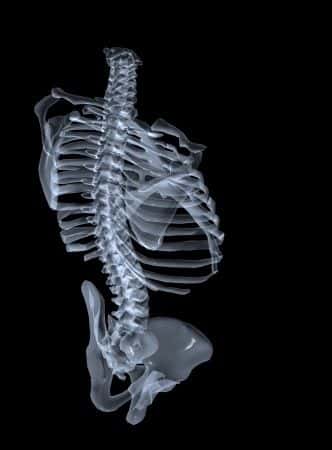Orthopedic Surgeon Expert Witness Opines on Misplaced Pedicle Screw Removal
Updated on
This case involves a forty-year-old male patient who presented to an orthopedic specialist complaining of chronic back pain. He described the pain as upper back pain radiating to his neck which was progressively worsening. The patient underwent several investigations, including imaging which revealed ulnar nerve compression due to disc herniation. Spinal surgery was recommended by the treating physician. The patient underwent a left ulnar nerve decompression and anterior transposition procedure to alleviate radiculopathic pain related to a herniated disc at C7-T1. According to the operative report, the procedure was conducted without incident. However, further imaging revealed instability of the spine at C7-T1 and C5-C6. It was decided that the next stage of treatment should be further surgery. The surgeon performed a posterior spinal fusion of C4-T1 in an attempt to stabilize. Post-operatively the patient continued to complain of severe pain radiating to the neck. A CT scan was ordered and showed a T1 screw protruding through the interior margin of the pedicle. The patient complained that he was in worse pain post-operatively than he was prior to any of the surgical interventions. The patient had an amorphous bump protruding from the C7-T1 area which correlated with the site of the neck and back pain. The patient returned to the treating surgeon with these symptoms. The surgeon refused to remove the dislodged pedicle claiming that it would not make a significant difference in the outcome for the patient and that further surgery carried unnecessary risks.
Question(s) For Expert Witness
1. When should a doctor not leave a misplaced pedicle screw behind if uncovered on imaging studies?
2. Is it possible that this patient's chronic pain related to improper technique during the surgical procedures?
Expert Witness Response
 Misplaced hardware is certainly an inherent risk of these types of spinal fusion procedures and is not all that uncommon, occurring in around 5% of cases. Whilst dislodged or misplaced pedicle screws are not commonly removed. However, when it appears to be the direct source of a patient's symptoms, as is the case in this scenario, there are very few instances where the instrumentation would not be redirected or removed. The rare cases when a misplaced pedicle screw would be left in place when a patient is not well enough to undergo risks of surgery or if the symptoms do not correspond with the location of the misplaced screw for example, lumbar screws in a patient complaining of cervical pain. If this screw is indeed resulting in compression of a nerve root, a case could be made that the patient's chronic pain could be related to improper technique. If the patient is otherwise in good health and there are no other contraindications a revision surgery should be performed in the hopes of alleviating the symptoms.
Misplaced hardware is certainly an inherent risk of these types of spinal fusion procedures and is not all that uncommon, occurring in around 5% of cases. Whilst dislodged or misplaced pedicle screws are not commonly removed. However, when it appears to be the direct source of a patient's symptoms, as is the case in this scenario, there are very few instances where the instrumentation would not be redirected or removed. The rare cases when a misplaced pedicle screw would be left in place when a patient is not well enough to undergo risks of surgery or if the symptoms do not correspond with the location of the misplaced screw for example, lumbar screws in a patient complaining of cervical pain. If this screw is indeed resulting in compression of a nerve root, a case could be made that the patient's chronic pain could be related to improper technique. If the patient is otherwise in good health and there are no other contraindications a revision surgery should be performed in the hopes of alleviating the symptoms.
About the author
Dr. Faiza Jibril
Dr. Faiza Jibril has extensive clinical experience ranging from primary care in the United Kingdom, to pediatrics and child abuse prevention at Mount Sinai Hospital, to obstetrics in Cape Town, South Africa. Her post-graduate education centered on clinical research and medical ethics. Dr. Jibril is currently Head of Sales in the US and Canada for Chambers and Partners - a world leading legal ranking and insights intelligence company.
Subscribe to our newsletter
Join our newsletter to stay up to date on legal news, insights and product updates from Expert Institute.
Sign up nowFind an expert witness near you
What State is your case in?
Subscribe to our newsletter
Join our newsletter to stay up to date on legal news, insights and product updates from Expert Institute.



